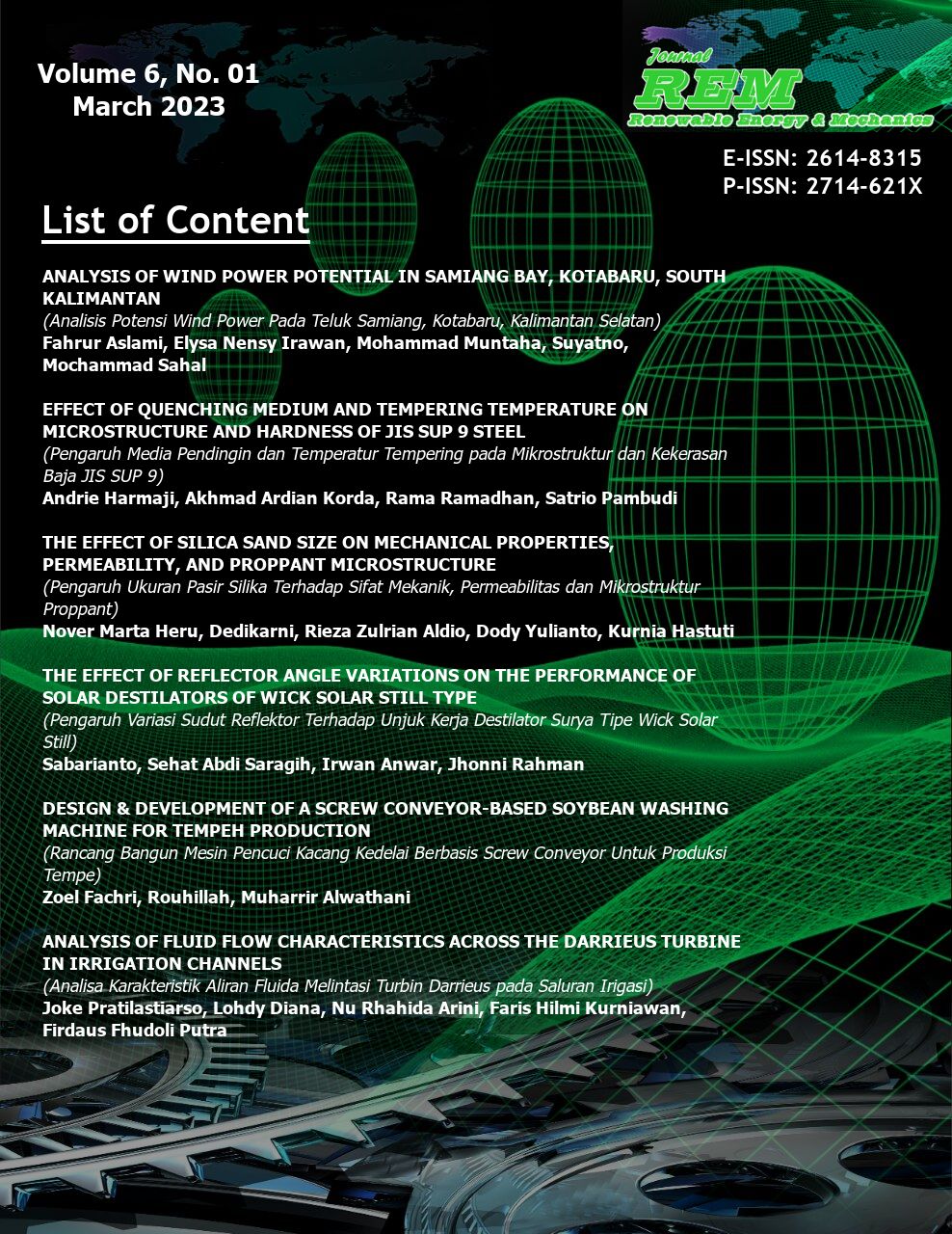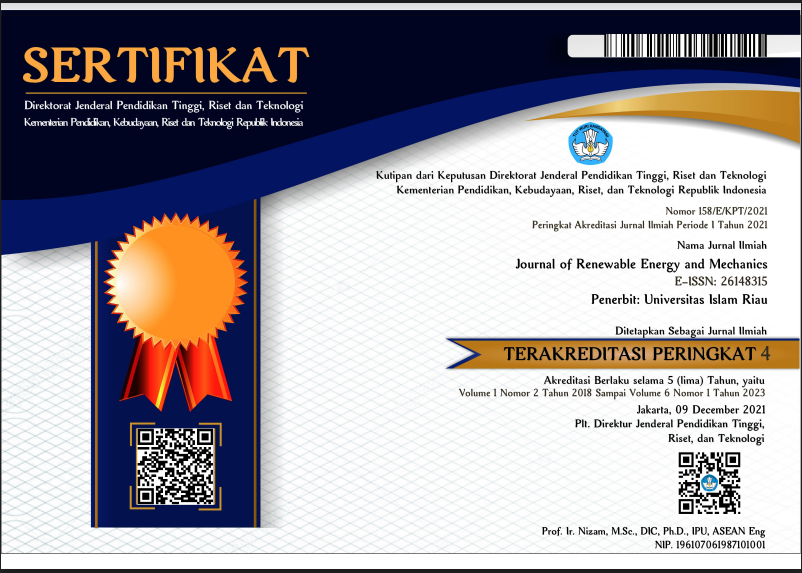Analysis of Fluid Flow Characteristics Across the Darrieus Turbine in Irrigation Channels
ANALISA KARAKTERISTIK ALIRAN FLUIDA MELINTASI TURBIN DARRIEUS PADA SALURAN IRIGASI
DOI:
https://doi.org/10.25299/rem.2023.vol6.no01.10905Keywords:
flow characteristic, darrieus turbine, simulation, irrigationAbstract
This study simulated the characteristics of the fluid flow that passes through the Darrieus turbine before installation and testing were carried out. The purpose of knowing the flow characteristics can determine the profile and position of the maximum speed so that the design and placement of the turbine can be improved. The research method was carried out using dynamic fluid computational simulations in three-dimensional form with steady state conditions, discretization using second-order, with convergent conditions when it reached 10-6. The simulation results show that the position of the flow above the turbine had the lowest value because the fluid flowed relatively without disturbance which caused the velocity to had a value almost the same as the incoming fluid velocity. The fluid velocity increased when it was in line 2 and line 3 or across the turbine. This was due to the turbulence generated by the rotation of the turbine. While the speed on line 4 or below the turbine had a lower value than line 2 and line 3. This was due to the position below the turbine so that the turbine rotation did not have an impact on speed. At the four line positions the velocity increased at Y=0.7 m or when the fluid hits the turbine. This increase in fluid velocity was expected to turn the turbine. The results also included the flow distribution in the form of a streamline in several positions where the flow that was in contact with the channel wall had a low velocity value due to friction with the wall.













